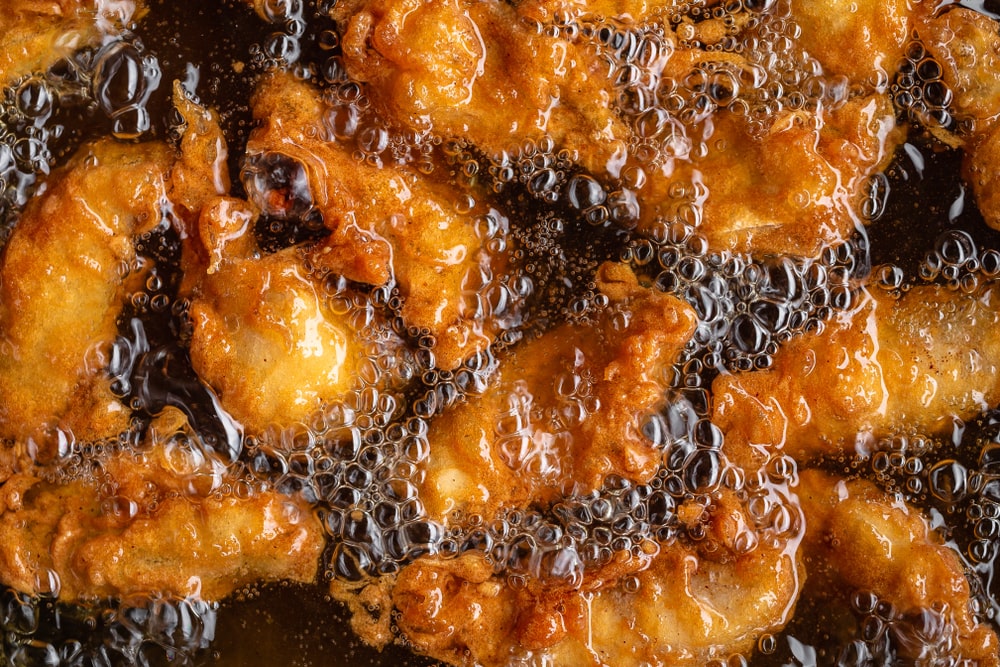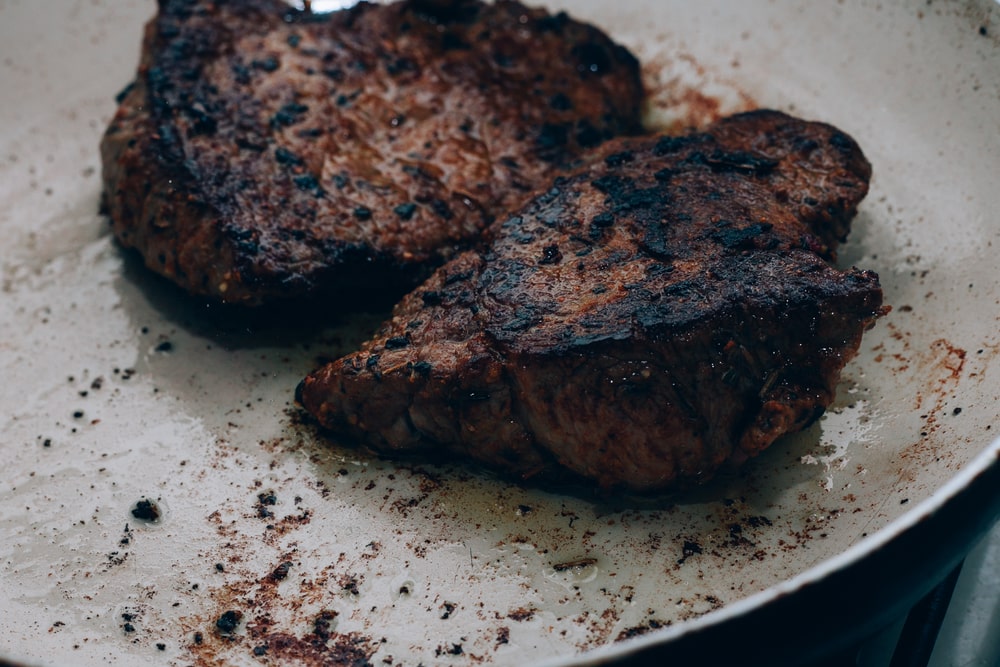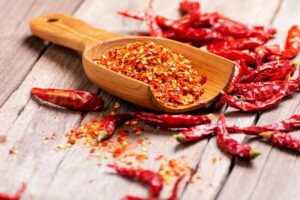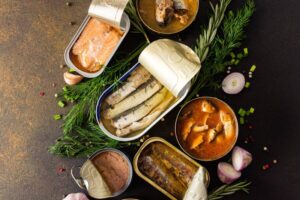Let’s talk about cooking mistakes and how they can sometimes lead to dangerous situations!
Cooking is a piece of cake—unless you don’t handle food safely. When it comes to preparing food, some people pride themselves on being great chefs; others burn everything they touch; and the rest fall somewhere in between.
Whatever your place on the cooking spectrum is, there are cooking mistakes that can actually make your food less healthy to consume. According to the latest data, one in six Americans falls sick from food poisoning each year, sending about 128,000 people to the emergency room and killing 3,000 more.
To identify these cooking mistakes, we asked food experts to provide their advice on the worst ways to prepare food when it comes to healthy eating. Let’s get started!

1. Frying your food
It may taste absolutely delicious, but eating deep-fried food on a regular basis isn’t good for your health. According to dietitians, the act of frying turns otherwise healthy goods, like veggies and lean meats, into unhealthy trans-fat-laden treats.
It has been shown that these fats can be dangerous, and frying your foods regularly is one of the worst cooking mistakes you can make. This is why many countries and regions have restricted or reduced them in food establishments.
If you can’t control your fried food obsession, experts recommend buying an air fryer. This appliance requires much less oil to prepare your food, so you can still enjoy your favorite meals without unhealthy fat that could potentially hurt your health.
2. Cooking with the wrong fats
Coconut oil, olive oil, and butter—they all have their detractors and fans, but none are the be-all and end-all. When it comes to cooking with fats, dietitians recommend doing a bit of research before buying a large jug of one particular oil and using it for everything, which is one of the worst cooking mistakes you can make.
This is because oils have different smoke points, which is the temperature at which they begin to burn. Once fats start smoking, they break down and can release hazardous substances called free radicals into the air.
Also, make sure you keep portions of oils in check when cooking. This will prevent extra calories.
3. Overheating healthy oils
According to dietitians, one of the most common cooking mistakes is using a high temperature when cooking healthy oils. Oils with low smoke points are better for salad dressing or as a topping for already-cooked foods—but not for high-temperature cooking.
This is because certain oils, like coconut oil and olive oil, contain nutritional compounds that can be instantly destroyed when heated to high temperatures above their smoke points. Not to mention that the preparation process will produce toxic fumes and free radicals, making it one of the worst cooking mistakes.
For general cooking at home (roasting, frying, sautéing), experts recommend using a neutral oil, like sunflower or grapeseed. For flavoring cold sauces and drizzling over prepared food, they suggest using flaxseed oil or extra virgin olive oil to preserve flavor and nutrition.

4. Charring your meat
While undercooked or raw meat can pose serious health hazards, so can charred or overcooked meat. According to dietitians, this is one of the worst cooking mistakes that can actually make you sick.
Experts explain that cooking meats above 300 degrees Fahrenheit, which typically results from grilling or pan-frying, can produce compounds called PAHs (polycyclic aromatic hydrocarbons) and HCAs (heterocyclic amine), both harmful to human DNA.
Some studies suggest that when metabolized, these compounds may activate enzymes associated with cancer risk. While the research is limited, dietitians believe there’s enough evidence to recommend limiting your exposure to these chemical compounds.
This being said, avoid cooking foods for any length of time over a hot metal surface or open flame, turn meat frequently during the cooking process, and remove charred portions of meat. To make sure you cook your meat properly, you need a meat thermometer, and here are some great options from Amazon.
Read on to discover other cooking mistakes that could turn your foods into toxic meals!
5. Adding too much sugar
According to the latest data, the average American consumes 60 grams of free sugar per day, which is about 14 teaspoons of white sugar. That’s way over the World Health Organization’s recommended healthy level of nine teaspoons for men and six teaspoons of sugar for women each day.
Desserts are the main culprit, but sugar is often hiding in unsuspecting foods, such as sauces, marinades, and dressings. In fact, one of the worst cooking mistakes is using these when preparing your meals. Natural forms of sugar, like maple syrup and honey, are slightly better, but they still cause an insulin spike in a similar way as refined sugar.
Instead, dietitians recommend taming your sweet tooth by consuming savory, liberally seasoned dishes when cooking meals and choosing fruit-centric desserts whenever possible. In recipes calling for sugar, experts recommend reducing the amount called for by half. This works great for banana bread, for example. No one will test the difference!
6. Getting too much salt
Moving forward the list of cooking mistakes that may ruin your meal or even harm your health is adding too much salt to foods.
If there’s one flavor Americans love in their foods, it’s salt. According to recent data, the average American consumes almost double the recommended daily allowance of salt. Health experts advise that American adults should aim to consume no more than 0.17 ounces (one teaspoon) of salt a day in order to prevent chronic disease.
The issue is that most of the sodium we consume is from pre-packaged foods; a total of 75% of the sodium in the average American diet comes from processed food.
7. Using “low-fat” everything you can find
There was a time when dietitians believed that fat was the enemy. Thankfully, though, that time is in the past. We’ve since learned that there are, in fact, fats that are great for your health, and not using them in your meals is one of the worst cooking mistakes you can make.
For instance, avocados and fish are packed with good fats (omega-3 fatty acids). Nutrition experts warn that not incorporating enough fat into your food is one of the worst cooking mistakes you can make.
Apart from being a protection for organs and an energy source, fat is used in cell membrane function, starts reactions that affect the metabolism and immune system, and allows the absorption of vitamins D, E, A, and K.

8. Drinking alcohol while cooking
Unless you’re sipping on a full stomach, dietitians warn against having that glass of wine while cooking your family meal. Drinking on an empty stomach can result in an unhealthy blood sugar spike.
Plus, you may notice that the longer you wait to have your meal after the initial drink, the hungrier you’ll feel, which could tempt you to overindulge in whatever food you see next.
But drinking alcohol before a meal can also do the opposite: it might suppress your appetite, preventing you from getting the necessary amount of calories and nutrients your body needs.
9. Relying on processed frozen food dishes for weekday meals
Last but not least on the list of cooking mistakes is reaching for a frozen meal on a regular basis. The truth is that it’s tempting to turn to a frozen food dish that promises to be ready for you in just a few minutes in the microwave. This is especially true after you’ve had a long, stressful day of work.
However, these foods often contain chemicals and preservatives. Keep in mind that humans have only been exposed to these processed foods for a very short time in evolutionary history. Not only do these dishes leave less room in your diet for healthier choices, but they are packed with ingredients like white flour, refined sugars, and artificial preservatives.
Instead, nutrition experts recommend opting for whole foods, like eggs, meat, vegetables, and fruits, whenever possible. And, if you really must buy something that comes in a box, choose one with ingredients that you recognize and understand.
If you liked our article on cooking mistakes that could end up poisoning you, you may also want to read 4 Things to Eat and Drink After Food Poisoning.







